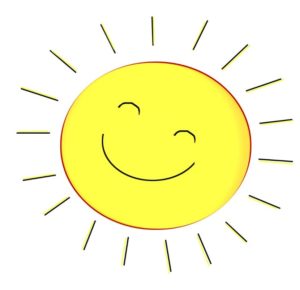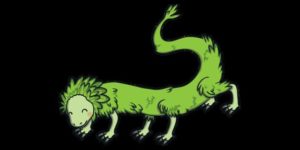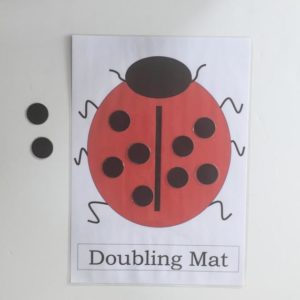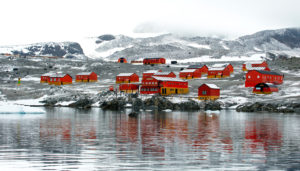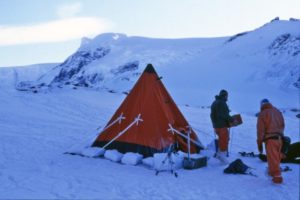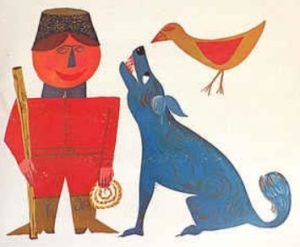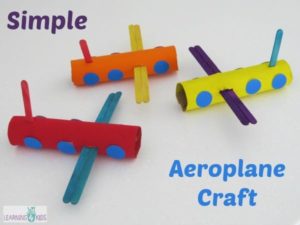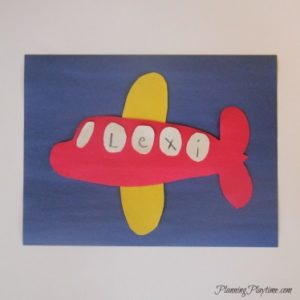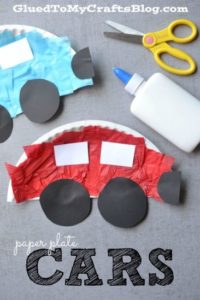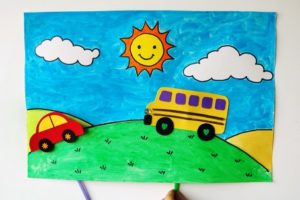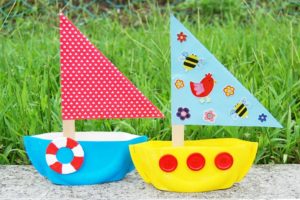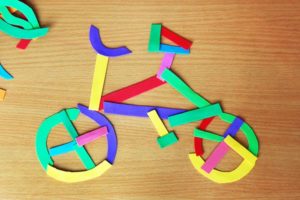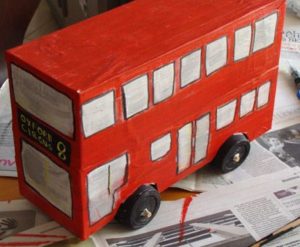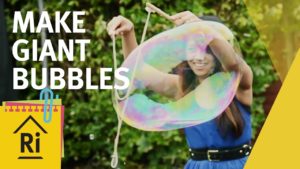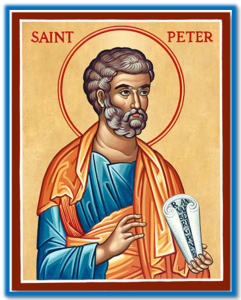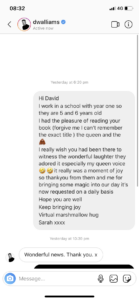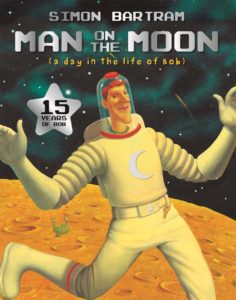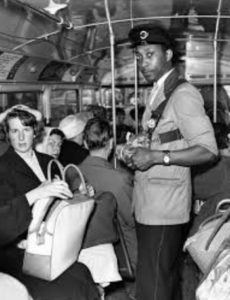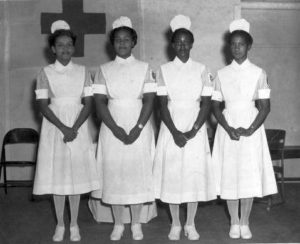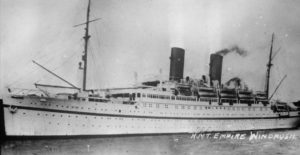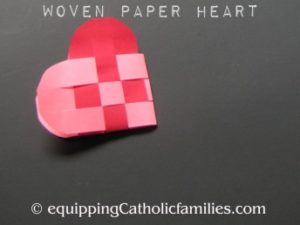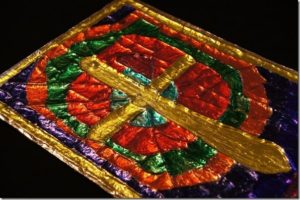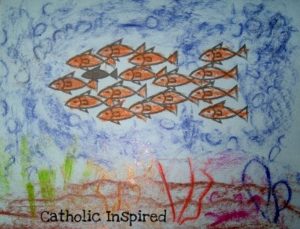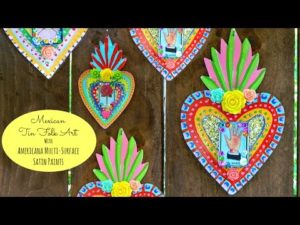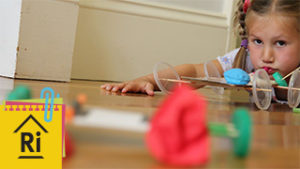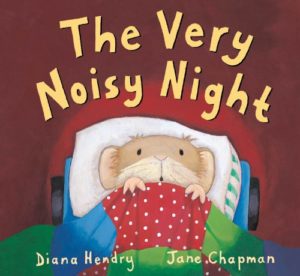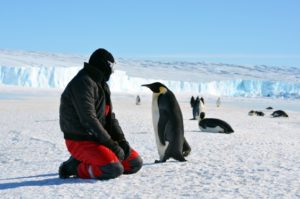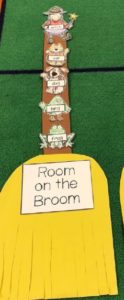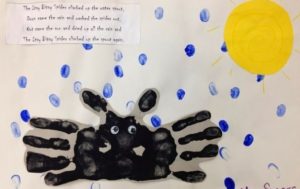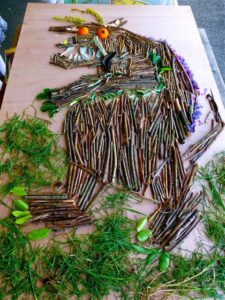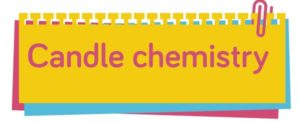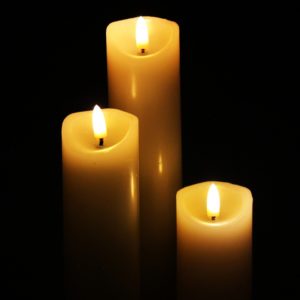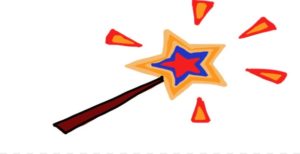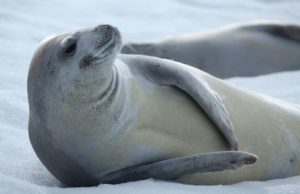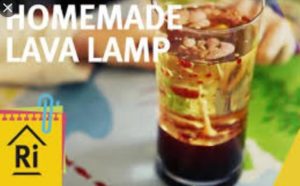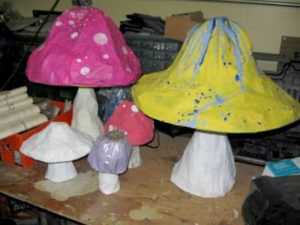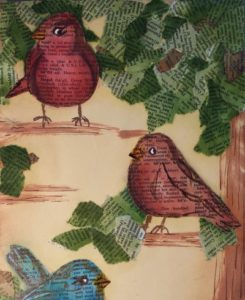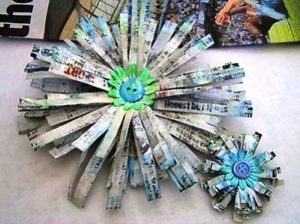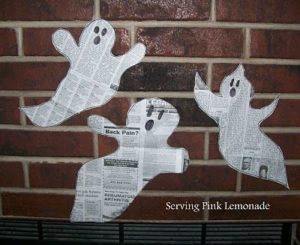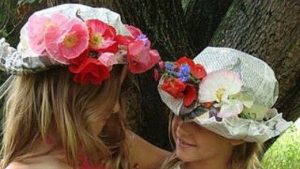Home learning 26th June.
Dear all
We have had another lovely week in school. We hope those of you at home are still keeping up with your learning and perhaps we will see more of you in school before the end of term? It is lovely to see more children coming in to school and enjoying being back with their friends and getting into the school routine. The weather has been so warm and it has been lovely to spend lots of time outside.
Remember that there is no need to complete all of the learning below! The focus should be on maths, some aspects of the online English learning and reading and then maybe you could choose one other project to do from the home learning ideas? Or more if you want to obviously! Make this time at home enjoyable and treasure the time you are together having fun! Remember that you can send us a piece of the children’s work or an activity that they want to share every week on our class email addresses:
Turtleclass@stpeterswaterlooville.hants.sch.uk
Pufferfishclass@stpeterswaterlooville.hants.sch.uk
We would love to see what the children are getting up to at home!
Don’t forget to look at Sumdog for maths, reading and spelling challenges.
English reading and writing
In this weeks sequence of lessons you will be learning about a fictional creature called a green-winged flay and over the week we will be writing our own information texts about our own fictional creatures. Miss Brown on the videos has made this creature up herself so there is no story for you to listen to! You will be doing some phonics ay (play), ai (train) and a-e (cake) focusing on the sound and as well as some spellings linked to the story (see below).
If it is a bit tricky or moves too fast for your child just focus on the key phonics being taught, or one version of the sound that your child knows e.g. ai and the key words. Maybe you could just work on one day of the online learning? Do what you feel your child can cope with. If you want an added challenge see if you can use some of the punctuation that we have been learning over the past few weeks such as the exclamation marks and editing using full stops and capital letters. Can you use the past tense in your account?
To listen to an information text
https://classroom.thenational.academy/lessons/to-listen-to-an-information-text
To create a creature
https://classroom.thenational.academy/lessons/to-create-a-creature
To develop my creature
https://classroom.thenational.academy/lessons/to-develop-my-creature
To be able to write my information text.
https://classroom.thenational.academy/lessons/to-begin-to-write-my-information-text
To continue to write my information text
https://classroom.thenational.academy/lessons/to-continue-to-write-my-information-text
Reading
We attach the link below because we feel it has some useful ideas. See page three. We are sure that you are doing many of them already!
Menu of reading response ideas KS1
The website below has lots of free to download ebooks suitable for laptops and tablets. You will need to register to access them but it is all free and the website has other information about different areas of literacy which you may find useful.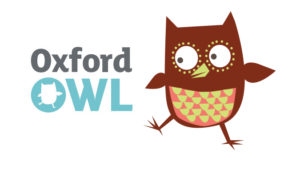
https://home.oxfordowl.co.uk/books/free-ebooks/
Spelling
Linking to the phonics and story this week:
Play, stay, plain, mainly, amaze, place, they and animal. Some of these words are a bit tricky to write and remember. If so see if you can learn they, little and like.
Maths
To find double and half of an amount.
https://classroom.thenational.academy/lessons/to-find-double-and-half-of-an-amount-of-money
To recognise and add equal groups.
https://classroom.thenational.academy/lessons/to-recognise-and-add-equal-groups
To add equal groups
https://classroom.thenational.academy/lessons/to-add-equal-groups
To solve problems using repeated patterns
https://classroom.thenational.academy/lessons/to-solve-problems-using-repeated-patterns
To share a total equally between a set number of groups.
Topic
Who lives in the Antarctic?
No humans live in Antarctica permanently. However, about 1,000 to 5,000 people live through the year at the science stations in Antarctica. Only plants and animals that can live in cold live there.
This little film show the living conditions for scientists at research stations in the Antarctic. It must be so cold!
https://www.youtube.com/watch?v=zbgkeca1nPc
Could you make a model of the Antarctic? Perhaps you cold include a research station along with their dogs and the resident penguins! We would love to see any models or pictures you make!
Music
The Wolf
Listen to this short piece of music and find a picture of a French horn.
How does this music make you feel?
What kind of character do you think the wolf is?
Can you draw a picture of him?
Art
Art Challenge: The Great Getaway! TRANSPORT
The title for your art this week is The Great Getaway! TRANSPORT. This can take the form of a drawing, a painting, a sculpture, a collage or anything else that you would like to create. As always, I’m sure you will impress me with your creativity!
Here are some ideas:
CHALLENGE: Design your own vehicle, maybe one that flies and can float on water!
However, if this doesn’t appeal to you then you can still send any other art work to me and I will post that on the Blog too. Please email your artwork to me:
n.pearson@stpeterswaterlooville.hants.sch.uk
Thank you
Keep creating and keep safe!
Mrs Pearson
Family Science Activity
Giant Bubbles
https://www.rigb.org/families/experimental/giant-bubbles – watch the video
· Make a home-bubble mixture and wands. Use them to look more closely at the characteristics and behaviour of soap bubbles.
· ExpeRiment with different shapes and sizes of bubbles and see what you can and cannot control about bubbles. Learn how to make giant bubbles and find out why bubbles are usually round.
· Learn how to make giant bubbles and find out why bubbles are usually round. https://www.rigb.org/docs/giantbubbles_infosheet_0_0.pdf – details on the information sheet.
You will need:
• Good quality washing up liquid
• Water
• Glycerin (optional)
• Plastic tub or other container for bubble mixture
• Measuring jug (optional)
• Various things with holes in them for blowing bubbles with. Watch the video for ideas. Straws, pipe cleaners, paperclips, coat hangers, cookie cutters and cake tins with removable bottoms are all particularly good.
• For giant bubbles: wooden spoons (or other sticks), a couple of metres of string and a small weight you can thread through it, like a metal key ring or nut.
What to do:
A mixture we found that works is 1 litre of water, 100ml of washing up liquid and 30 ml (2 tablespoons) of glycerin. Blow some bubbles!
Put a straw into your bubble solution and try blowing gently into the liquid. You should be able to make a lot of bubbles very quickly. Then dip one end of a straw into the solution, take it out and blow gently through the other end. See if you can control the size of bubble you can blow out of the straw.
Try making bubbles using things with bigger holes, like a paperclip or pipe cleaner bent into a circle. Try poking a dry finger into a bubble, then try the same thing after dipping your finger in bubble solution.
Try making bubbles inside bubbles by poking a straw dipped in bubble solution into an existing bubble and blowing again.
Try out objects with different shaped holes, like cookie cutters or pipe cleaners bent into other shapes. Try objects with really big holes, like a coat hanger or a cake baking tin with its bottom removed. Try making giant bubbles with the special wand we show you how to make in the video.
Going Further:
· You can experiment with your bubble mixture and giant bubble wand to see just how big you can get your bubbles to be. There are lots of different bubble mixture recipes on the internet, just search for “soap bubble recipe”.
· You could try making two or three of them and comparing how good the bubbles they make are.
Our school patronal feast day takes place on Sunday 28th June. In order to prepare for this special time of the year, please choose ONE of the following activities in order to learn more about St. Peter…
Jesus told Peter, ‘I will give you the keys to the Kingdom of Heaven’.
Design the keys and include as many symbols as you can to represent St. Peter and why he was so special. What would the keys be made of?
Jesus said to Peter, ‘You are a rock, and on this rock I will build my church’.
Could you paint or decorate a stone or pebble, to show ways in which to build God’s church?
(e.g. by spreading love, faith and Good News).
Take a look at the St. Peter’s logo on our school website. Can you re-design the crest so it reflects the qualities of St. Peter? (e.g. trust, hope, responsibility).
Why did Jesus say ‘feed my lambs’? How might St. Peter ask us to continue God’s work on earth?
Use the internet to research St. Peter – can you make a fact file about our school saint?
Which key words might you use as part of your factual information page?
Home learning 19th June
Dear all
We have had another lovely week in school. We hope those of you at home are still keeping up with your learning and perhaps we will see more of you in school before the end of term?
Some of the children in year 1 this week have been reading a book by David Walliams in class. Mrs Walls sent a message to David Walliams on social media saying how much the children had enjoyed it and he replied! Here is the message. How exciting !
On the 22nd June we mark Windrush day. This commemorates the people who came to the UK to help us 72 years ago. We have included some home learning to help you and your families learn a little and to think about what it must have been like to come such a long way from home and family to live in a new and cold country. You may want to find out more about their experiences together.
Remember that there is no need to complete all of the learning below! The focus should be on maths, some aspects of the online English learning and reading and then maybe you could choose one other project to do from the home learning ideas? Or more if you want to obviously! Make this time at home enjoyable and treasure the time you are together having fun! Remember that you can send us a piece of the children’s work or an activity that they want to share every week on our class email addresses:
Turtleclass@stpeterswaterlooville.hants.sch.uk
Pufferfishclass@stpeterswaterlooville.hants.sch.uk
We would love to see what the children are getting up to at home!
Don’t forget to look at Sumdog for maths, reading and spelling challenges.
English reading and writing
The Man On The Moon: ( A day in the life of Bob)
https://www.youtube.com/watch?v=Rt5zQ1UO6rE
To listen to a story
https://classroom.thenational.academy/lessons/to-listen-to-a-story-a1104f/
To commit a story to memory
https://classroom.thenational.academy/lessons/to-commit-a-story-to-memory-82ce18/
To use the first person and the past tense
https://classroom.thenational.academy/lessons/to-use-the-first-person-and-the-past-tense/
To begin to write our recount
https://classroom.thenational.academy/lessons/to-begin-to-write-our-recount/
To continue to write our recount
https://classroom.thenational.academy/lessons/to-continue-to-write-our-recount/
In this weeks sequence of lessons you will be learning about Bob and his job on the moon! We will be using the first person and thinking about using the past tense in our recount. You will be doing some phonics focusing on the sound or (short), aw (paw) and au (launch) as well as some spellings linked to the story.
If it is a bit tricky or moves too fast for your child just focus on the key phonics being taught, or one version of the sound that your child knows e.g. or and the key words. Maybe you could just work on one day of the online learning? Do what you feel your child can cope with. Recapping the past tense would be a good place to start. Tuesday’s learning suggests making a story map. Do this together and retell the story using your story map. The last 2 days are a recount but you do not need to write a sentence for every aspect of the story. The key thing is that you enjoy your writing and use the past tense and first person to demonstrate your new learning.
Reading
We attach the link below because we feel it has some useful ideas. See page three. We are sure that you are doing many of them already!
Menu of reading response ideas KS1
The website below has lots of free to download ebooks suitable for laptops and tablets. You will need to register to access them but it is all free and the website has other information about different areas of literacy which you may find useful.
https://home.oxfordowl.co.uk/books/free-ebooks/
Spelling
Linking to the phonics and story this week:
Saw, yawn, important, sweetcorn, launch, astronaut, two, some. Some of these words are a bit tricky to write and remember. If so see if you can learn put, one and some.
Maths
To use addition and subtraction in the context of money
To exchange money for items
https://classroom.thenational.academy/lessons/to-exchange-money-for-items/
To find the total cost of two items
https://classroom.thenational.academy/lessons/to-find-the-total-cost-of-two-items/
To calculate the amount of change needed
https://classroom.thenational.academy/lessons/to-calculate-the-amount-of-change-needed/
To calculate the amount of change needed
https://classroom.thenational.academy/lessons/to-calculate-the-amount-of-change-needed-6a081a/
History
The 22nd June is the annual Windrush day which celebrates the contribution of those people who came from the Carribean on ‘The Empire Windrush’ ship 72 years ago to start a new life in Britain. These people came across the sea to help the United Kingdom rebuild following the Second World War and they took on lots of different jobs including working in the NHS and on public transport like the buses as in the photos below!
Here are some photographs of the ship.
What do you think it would have felt like to move from your home to a totally new country?
What do you think you would expect to see?
Find out a little about the Caribbean. What would have been different or the same about living in England?
Music
Cat and Duck
Listen to this short piece of music and find a picture of a clarinet
Close your eyes and imagine the cat prowling around.
Can you prowl around like a cat hunting?
Now listen to this short piece of music and find a picture of an oboe.
How does the duck move differently to the cat?
Art
Art Challenge Feast Days
We have two important Feast Days in our Church calendar for June. The 19th June is the Feast of the Sacred Heart and 29th June is the Feast Day of St Peter and St Paul.
For your art challenge this week I would you to do a creation linked to either of these Feast Days.
The Sacred Heart of Jesus is an object of devotion and always falls 19 days after Pentecost.
As you know, St Peter was given the ‘keys to heaven’ by Jesus and was our first Pope and in Matthew Ch16v18 Jesus said ‘And I tell you, you are Peter, and on this rock I will build my church.’ He is also the Patron St of fishermen. St Paul changed from not believing in Christianity to spreading the word through the letters that he wrote. Naturally, he is the Patron St of writers.
Ideas to inspire you:
Alternatively, you could do artwork to do with the Patron St that you have been linked to in school (England St George; Scotland St Andrew; Ireland St Patrick: Wales St David), or the Patron St of your home country.
However, if this doesn’t appeal to you, then you can still send any other art work to me and I will post that on the Blog too.
Please email your artwork to me:
n.pearson@stpeterswaterlooville.hants.sch.uk
Thank you.
Family Science Activity
Balloon Car Racers
https://www.rigb.org/families/experimental/balloon-car-racers – to watch the video
The activity – Make cars which are propelled by balloon power.
ExpeRiment with designs and see what factors affect how fast or how far your car goes.
Learn how a balloon car works just like a rocket.
https://www.rigb.org/docs/ballooncarracers_infosheet_1_1.pdf – to view the information sheet
What to do:
- Make a balloon car based on the instructions Mark gives in the video.
- Decide how you will judge what makes a ‘good’ car – is it how far it goes or how fast it goes?
- Investigate what happens if you have bigger or smaller wheels (you can use other types of lids or make wheels from cardboard and use blu-tac or glue to attach them to the kebab skewers).
- Investigate what happens if you change the design of your car in other ways – you can watch the video again for inspiration for other designs.
Going further challenge:
- Measure how far your car travels using a tape measure.
- Time how fast your car travels ½ a metre – would double the speed be the time that your car would travel 1 metre? Test it out.
- You can find the speed of your car in metres per second using a stopclock and a tape measure: Measure the distance the car travels (in metres) then dividing that distance by the time it took to travel (in seconds).
Home learning 12th June
Dear all
It has been lovely to see so many of you back in school. For those of you at home we hope you are keeping safe and managing to continue with some home learning. Remember that you can focus on topics and learning that really interest you too. If you go for a walk or to the beach can you do some research, write a poem or draw a picture of what you found there?
Remember that there is no need to complete all of the learning below! The focus should be on maths, some aspects of the online English learning and reading and then maybe you could choose one other project to do from the home learning ideas? Or more if you want to obviously! Make this time at home enjoyable and treasure the time you are together having fun! Remember that you can send us a piece of the children’s work or an activity that they want to share every week on our class email addresses:
Turtleclass@stpeterswaterlooville.hants.sch.uk
Pufferfishclass@stpeterswaterlooville.hants.sch.uk
We would love to see what the children are getting up to at home!
Don’t forget to look at Sumdog for maths, reading and spelling challenges.
English reading and writing
A Very Noisy Night! By Diane Henry You can easily find this on youtube to support your learning!
To listen to a story
https://classroom.thenational.academy/lessons/to-listen-to-a-story
To commit a story to memory
https://classroom.thenational.academy/lessons/to-commit-a-story-to-memory-4ca7c8
To use exclamation marks
https://classroom.thenational.academy/lessons/to-use-exclamation-marks
To begin to write our story
https://classroom.thenational.academy/lessons/to-begin-to-write-our-story-e60c4f
To continue to write our story
https://classroom.thenational.academy/lessons/to-continue-to-write-our-story-f375f0
In this weeks sequence of lessons you will be learning about the story of ‘The Very Noisy Night: by Diane Henry.’ You will be doing some phonics focusing on the sound ow (cow), ou (sound) as well as some spellings linked to the story.
If it is a bit tricky or moves too fast for your child just focus on the key phonics being taught, or one version of the sound that your child knows e.g. ow and the key words. Maybe you could just work on one day of the online learning? Do what you feel your child can cope with. The story map may take some time so perhaps concentrate on verbally retelling the story rather than drawing it out? Then there will be more time to write their own retelling of the story. As a challenge see if the children can add some interesting vocabulary to make their sentences more interesting for the reader?
Reading
We attach the link below because we feel it has some useful ideas. See page three. We are sure that you are doing many of them already!
Menu of reading response ideas KS1
The website below has lots of free to download ebooks suitable for laptops and tablets. You will need to register to access them but it is all free and the website has other information about different areas of literacy which you may find useful.
https://home.oxfordowl.co.uk/books/free-ebooks/
Spelling
Linking to the phonics and story this week:
now, howl, owl, mouse, house, sound, once, push, come (highlighted are the year 1 common exception words)
Maths
To identify the physical properties of coins.
If the coin denominations used prove too tricky for your child, use those coins with which they are familiar to find totals and make equal amounts.
To recognise the value of different coins.
https://classroom.thenational.academy/lessons/to-recognise-the-value-of-different-coins-b1b5b6/
To recognise the value of different coins.
https://classroom.thenational.academy/lessons/to-recognise-the-value-of-different-coins-and-notes/
To compare different amounts of money.
https://classroom.thenational.academy/lessons/to-compare-different-amounts-of-money/
Topic
What do humans need to live in such a cold environment?
Watch this film about some teachers who go to Antarctica and how they kept warm and got around! Can you imagine what it might be like to live somewhere so cold? What clothes would you need? Can you design a set of clothes that you might wear? Include shoes, hat and gloves and warm layers!
https://www.stem.org.uk/elibrary/resource/31005
Music
Week 3- Bird
Listen to this short piece of music and find the picture of the flute.
Is the pitch of this music low or high?
What do you think the bird is doing in the story?
Can you find some everyday objects that make a high pitch?
Religious education
Following the celebration of Pentecost in our Church calendar, we would like you continue to reflect upon our Mission and how we can ‘use the gifts God gave us to make our world a better place’.
Just as the Holy Spirit had appeared to the Apostles of Jesus and gave them hope while they were in Jerusalem, we would like you to consider how YOU can use the power of the Holy Spirit to support and encourage others.
Can you complete ONE of the following activities, to explore how we can continue God’s work on Earth as His followers?
*Write a prayer to Jesus thanking him for sending the Holy Spirit to the disciples.
*Create a Pentecost wind twirl. You could write your prayer on it.
*Retell the story. Perform it to your family.
*Learn this song.
Art
Key Stage One
For your art challenge this week I would like you to do a creation linked to a Nursery Rhyme or book. This could be a collage picture of Humpty Dumpty made out of egg shells, a wanted poster of the Big Bad Wolf, or the witch from one of my favourite books, ‘Room on a Broom.’ You may even do your art in the woods, such as leaving the Gruffalo’s footprints or make a small stick house. It can be a picture using any materials or a 3D creation. Let your fantastic imaginations go wild!
WOW! CHALLENGE: Learn the Nursery Rhyme or a page from the book and perform it to your family.
Ideas to inspire you:
However, if this doesn’t appeal to you, then you can still send any other art work to me and I will post that on the Blog too.
Please email your artwork to me:
n.pearson@stpeterswaterlooville.hants.sch.uk
Thank you
Keep creating and keep safe!
Mrs Pearson
Family Science Activity
**Please note that this activity must be carried out in the presence of an adult to ensure safety**
Safety advice for parents
- Do the activity on a table which is cleared of any other flammable objects or materials. Use your judgement as a parent to decide whether or not to let your child light the candles on their own.
- Make sure you’ve blown out any candles after doing the activity. Don’t move a lit candle when doing this activity. Don’t allow your child to touch the wick or candle until it has completely cooled.
- Don’t leave a lit candle unattended at any time. There’s more extensive safety advice on using candles from the UK Fire Service here: http://bit.ly/BeFireSafe
The activity
- Make a blown out candle relight as if by magic.
- ExpeRiment to find out how long a candle will burn in different amounts of air.
- Learn about the chemistry of how a candle burns.
https://www.rigb.org/families/experimental/candle-chemistry
What you will need
- At least one tea light or other small candle.
- Gas-powered cooker lighter (or long handled matches).
- Glass jars or glasses of various sizes.
- Stopwatch (maybe the one on your smartphone) or other way of measuring time.
What to do
https://www.rigb.org/docs/candlechemistry_infosheet_0_1.pdf – for information sheet about the activity.
Going Further Challenge:
Learn more facts about fire: http://bit.ly/FireFacts
Make a carbon dioxide fire extinguisher for your candles: http://bit.ly/CO2Ext
Watch a video on how candles are made: http://bit.ly/CandlesMade
Use a candle to suck water into a glass like Josh does at the end of the film: http://bit.ly/WaterCandle
Home learning 5th June 2020
Dear all
We hope that all of the children are enjoying getting back into their learning, either in school or at home this week. As we mentioned last week, the children in school are following the home learning set for those at home so that all of the children have the opportunity to access the same learning. It has been lovely to see lots of you in school and to catch up on what you have been doing in your time away. We hope it will be a fun half term to come!
Remember that there is no need to complete all of the learning below! The focus should be on maths, some aspects of the online English learning and reading and then maybe you could choose one other project to do from the home learning ideas? Or more if you want to obviously! Make this time at home enjoyable and treasure the time you are together having fun! Remember that you can send us a piece of the children’s work or an activity that they want to share every week on our class email addresses:
Turtleclass@stpeterswaterlooville.hants.sch.uk
Pufferfishclass@stpeterswaterlooville.hants.sch.uk
We would love to see what the children are getting up to at home!
Don’t forget to look at Sumdog for maths, reading and spelling challenges which will be updated each week. See also mymaths for maths challenges.
English reading and writing
To listen to a poem and act it out
https://www.thenational.academy/year-1/english/to-listen-to-a-poem-year-1-wk6-1
To identify rhyming words
https://www.thenational.academy/year-1/english/to-identify-rhyming-words-year-1-wk6-2
To identify onomatopoeia
https://www.thenational.academy/year-1/english/to-identify-onomatopoeia-year-1-wk6-3
To plan a poem
https://www.thenational.academy/year-1/english/to-plan-our-poem-year-1-wk6-4
To write a poem
https://www.thenational.academy/year-1/english/to-write-our-poem-year-1-wk6-5
In this weeks sequence of lessons you will be thinking about poetry. It would help if you had a magic wand!! You will be doing some phonics focusing on the sound ur (nurse), er (letter) and ir (first) as well as some spellings linked to the story.
If it is a bit tricky or moves too fast for your child just focus on the key phonics being taught, or one version of the sound that your child knows e.g. ur or er and on writing some simple sentences or key words. Maybe you could just work on one day of the online learning? Do what you feel your child can cope with.
Reading
We attach the link below because we feel it has some useful ideas. See page three. We are sure that you are doing many of them already!
Menu of reading response ideas KS1
Also see the Collins connect PDF (see blog post for link) for access to lots of books to read online.
ONLINE READING COLLINS CONNECT
Spelling
These are the spellings highlighted in the Oak Academy online English learning:
first, bird, fur, nurse, teacher, faster, some, into.
Most of these words are to reinforce the phonics learning this week. Some and into should be familiar to all of the children!
Maths
To solve word problems
https://www.thenational.academy/year-1/maths/to-solve-word-problems-year-1-wk6-1
To explore addition and subtraction
https://www.thenational.academy/year-1/maths/to-explore-addition-and-subtraction-year-1-wk6-2
To explore addition and subtraction
https://www.thenational.academy/year-1/maths/to-explore-addition-and-subtraction-year-1-wk6-3
To solve problems in context using addition and subtraction
To solve problems in context using addition and subtraction
Topic
Antarctic animals and how they have adapted for life in the freezer!
Look up the twinkl powerpoint ‘Antarctic animals: what can you see?’ and see if you can talk with your grown up about what you think the animal might be that has been hidden? What do you already know about the animal?
https://www.twinkl.co.uk/resource/antarctic-animals-what-can-you-see-powerpoint-t-tp-2549081
The second link takes you to a website which explains a little more about each animal and how they have adapted to the harsh cold environment in which they live. https://www.coolantarctica.com/Antarctica%20fact%20file/wildlife/antarctic_animal_adaptations.php
Talk this through with your adult. Do you think there are any animals in the British Isles that may need the same sort of adaptations? Why do you think that? Can you choose your favourite animal and write a fact file about how it has adapted for living in freezing conditions. Can you draw and label a picture too?
The second link takes you to a website which explains a little more about each animal and how they have adapted to the harsh cold environment in which they live. https://www.coolantarctica.com/Antarctica%20fact%20file/wildlife/antarctic_animal_adaptations.php
Talk this through with your adult. Do you think there are any animals in the British Isles that may need the same sort of adaptations? Why do you think that? Can you choose your favourite animal and write a fact file about how it has adapted for living in freezing conditions. Can you draw and label a picture too?
Music
Week 2- Grandfather
Listen to this short piece of music and find the picture of the bassoon.
What mood do you think Grandfather is in?
How do you think grandfather might move?
How is this music the same or different to Peter’s music?
Family Science Activity
https://www.rigb.org/families/experimental/homemade-lava-lamp
ExpeRiment with objects of different shapes and sizes. See what makes a difference to whether something sinks or floats in water.
Learn how an object’s density affects if something is likely to sink or float.
https://www.rigb.org/docs/lavalamp_infosheet_0_1.pdf
Questions to ask children:
- Before each activity: can you predict what will happen? Why do you predict that? (For example, can you predict what will happen when we squash the tin foil really tightly?
- Can you predict what will happen if we use metal spoon instead of a plastic one?
- Can you predict what will happen if we peel the fruit?) Why does the diet drink float while the non-diet one sinks?
- What do you think will happen when we pour the oil into the glass of water? Why?
- What do you think is in the bubbles that are rising up in the lava lamp? Why do you think they sink back down again?
Going Further:
- You can give your child or children a lump of plasticine and explore how to mould the plasticine into shapes that float. Discuss what the floating shapes have in common compared to shapes that sink.
- The density of an object affects its buoyancy. You can learn more about this and how density affects whether something sinks or floats here: http://bit.ly/
- Buoyancy You can try to make a ‘density tower’ by floating liquids of different density on top of each other, as shown in this video: http://bit.ly/DensityTower
- Here’s a quick lava lamp using fizzy water – http://bit.ly/FizzyLavaLamp
ART
Read all about it! St Peter’s are IN THE NEWS!
For this week’s Art Challenge I would like you to produce some art using old newspapers or magazines! It can be anything from cutting out shapes and creating your own abstract art, or landscape, to making something using Paper Mache. What you make can be left black and white or even painted (using watercolours is very effective). Whatever you create I’m sure you will ‘Make the headlines’ on the Art Blog!
Ideas to inspire you:
However, if this doesn’t appeal to you can still send any other art work to me and I will post that on the Blog too.
Please email your artwork to me:
n.pearson@stpeterswaterlooville.hants.sch.uk
Thank you
